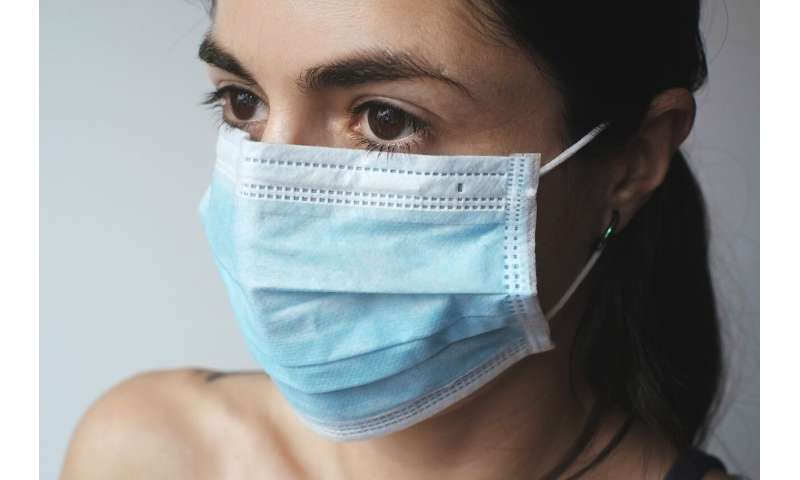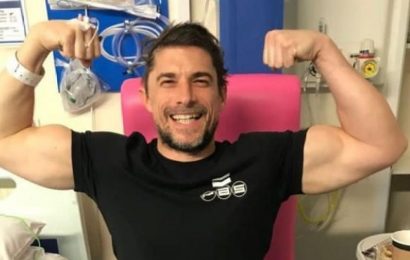
For the past decade, scientists have urged the United States to prepare for an outbreak of some unknown pathogen. Despite the warnings, however, and even in the wake of SARS, MERS, and H1N1, we are in the middle of a galloping COVID-19 pandemic, ill-equipped, scrambling, and scared.
Although it is hard to find anything positive in this pandemic, it is shining a critical light on the cracks in America’s public health system, education and preparedness. “Emergencies have a way of exposing all the weaknesses we have public health-wise, such as knowledge about hand hygiene, disinfecting, clean surfaces, and stronger surveillance, which depend on strong local public health systems, many of which are under-funded,” said Bruce Y. Lee, MD, MBA, Professor of Health Policy and Management and Executive Director of Public Health Informatics Computational and Operations Research (PHICOR). Lee and his colleagues at the City University of New York (CUNY) Graduate School of Public Health & Health Policy see this pandemic as an urgent reminder to shore up the country’s science-based public health infrastructure to prevent such emergencies from becoming our new normal.
An essential first step is understanding key factors early on in the virus’ national spread and the initial public health response, including the Centers for Disease Control’s (CDC) delayed distribution of a diagnostic test that turned out to be faulty, said Denis Nash, Ph.D., Distinguished Professor of Epidemiology and Executive Director of the Institute for Implementation Science and Population Health. “The test didn’t give us much epidemiological information about the virus’ spread, which political leaders interpreted as an absence of evidence and a reason to call the risk ‘low,'” Nash said. This information gap wasted valuable time in identifying and isolating infected individuals, which might have slowed the outbreak, he explained. “Having no real source of information from our federal, state or local governments has been a real problem.”
Indeed, the lack of solid epidemiological data has given way to misinformation and disinformation about all aspects of COVID-19, from transmissibility to treatment. “A lot of people who are offering opinions have no experience and don’t know what they’re talking about,” Lee said. “It’s not clear yet how many people in the U.S. are infected because there is no broad testing. We can’t predict how many people will get sick or die because there are so many variables.”
Not knowing how many people are infected, or how fast or where the virus is spreading could result in a surge of sick people overwhelming the healthcare system, said Distinguished Lecturer Scott C. Ratzan, MD. Already, necessary medical equipment such as surgical masks and ventilators are in short supply. “If we get a peak too fast and we’re not prepared we’re in trouble,” Ratzan said. Moreover, the coronavirus could mutate and change, halting the potential effectiveness of vaccines in the pipeline. “We don’t know if this virus will change over time,” Lee added.
With incidences of COVID-19 increasing hourly, what’s needed first and foremost is a central, highly credible source of clear, science- and evidence-based health information and communication. “We need one place to go to for information. Lack of information brings fear and anxiety,” Ratzan said.
And the main information source should be science. “Scientists should be leading the charge here,” Lee said. “Science is what you have to listen to in an emergency. If you bash it, people get confused.” He added that all health communication should be global. “Everyone around the world is in this together, and the only way to mount a rapid response is through cooperation. This is not the time to become more isolationist.”
Clear public health directives about regular handwashing, social distancing, working from home, avoiding unnecessary travel, and testing are essential. “Who should be tested should be clearer,” Lee said. “Ideally you want to test as much as possible but that’s limited by resources. We need a strategy that can be accommodated by level of resources we have now.”
Broad surveillance and testing are keys to preparedness, and they require ongoing investment. “It’s not what you do during an epidemic but in between that makes a difference,” Lee said, pointing to the need to fund a more robust public health infrastructure, including ongoing research in vaccine development. “There has to be more investment in the development of vaccines and other prevention, intervention, and control measures and products. Cutting scientific research funding is only going to make us more vulnerable to future epidemics.”
Preparedness requires more than a medical response. According to Catherine Machalaba, a policy adviser and research scientist at EcoHealth Alliance, a global environmental health nonprofit organization, eliminating agricultural and food production practices that increase the transmission risk of animal-borne disease is crucial. She explained that hundreds of millions of people, largely in developing settings, depend on live animal markets for food, where people are directly exposed to butchered animals’ blood and other bodily fluids. “Most people in developing settings don’t have cold storage and rely on freshly killed food sources, which increases vulnerability in terms of disease spillover,” said Machalaba, who is also a CUNY Ph.D. student in Environmental and Planetary Health Sciences. Such spillover was implicated in the SARS and several Ebola outbreaks, and has been associated with the initial coronavirus outbreak in Wuhan, China, where the virus likely jumped from bats, possibly via an intermediate species, to humans. Live animal markets exist in New York City, although on a much smaller scale and with greater hygienic oversight, she said.
These markets are not the only potential source of viral outbreaks, however. The wildlife trade, which occurs legally and illegally worldwide, largely without disease surveillance, has been linked to the introduction of various outbreaks, such as monkey pox in the US. “When we’re thinking of new emerging infectious diseases, it’s wildlife you have to be concerned about,” Machalaba said. “Because we’re not seeing investment in surveillance and risk reduction, we’re not able to get ahead of the curve.”
Unknowns about COVID-19 abound. Will the warmth and humidity of summer impair its ability to survive as it does other viruses? Does overcoming the virus confer immunity? Once the pandemic ends, will coronavirus disappear? No one knows.
What experts do know is that aggressive and frequent handwashing, keeping your hands away from your face, and social distancing provide the best protection. “Studies show that people touch their faces 16 to 23 times an hour, and this could be an underestimate. If you pay attention, you’ll be surprised how many times you’re touching surfaces and then your face, eyes, nose, and mouth,” Lee said. People also don’t realize how little or how poorly they wash their hands, he said. “If someone is sick, doesn’t wash their hands properly and touches things, you can quickly see how quickly this virus can spread.” He stressed that hand sanitizer is not a replacement for proper handwashing, which entails more friction and the use of water, which can help carry away the virus.
In the end, scholars agreed that by working together, people can help prevent the spread of COVID-19. “People are not helpless to prevent its spread,” Lee said. “Actually, people are key to preventing its spread. Each person can do his or her part.”
Source: Read Full Article


